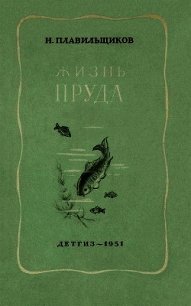Бегство от одиночества - Панов Евгений Николаевич (книги онлайн без регистрации полностью TXT) 📗
Панов Е. Н. (1999). Каменки Палеарктики. М.: КМК. 342 с.
Юм Д. (1965). О многоженстве и разводах. — Сочинения. Т. 2. с. 694–703.
Baeyens G. (1981). Functional aspect of serial monogamy: the magpie pair-bond in relation to its territorial system. — Ardea. 69 (2). Pp. 145–166.
Bartley M. M. (1995). Courtship and continued progress: Julian Huxley's studies on bird behaviok. — J. of History of Biol. 28 (3).: Pp. 91–108.
Cliivers D. J. (1974). The siamang in Malaya A field study of a primate in tropical rain forest — Contribs. PrimatoL 4. Pp. 1–335. Basel.
Clutton-Brock T. H. (1989). Mammalian mating systems. — Proc. Royal. Soc. lond. B 236. № 1285. Pp. 339–372.
Davis L. S. (1988). Coordination of incubation routine and mate choice in Adeliae penguims (Pygoscelis adeliae). — Auk. 105 (3). Pp. 428–432.
Drost R., Focke F., Freytag G. Entwicldung und Aufbau einer Population der Silbermowe, Larus argentatus argentatus. — j. Omithol 102 (3). Pp. 404–409.
Fox G, J. (1972). Some comparisons between siamang and gibbon behaviour. — Folia primatol. 18 (1–2). Pp. 122–139.
Haimoff E. H., Yang X.-J., He S.-J., Chen N. (1986). Census and survey of wild black-crested gibbons (Hylobates concolor concolor) in Yunnan Province, People's Republic of China — Folia primatol. 46 (4). Pp. 205–214.
Ingram J. (1977). Interaction between parents and infants, and the development of independence in the common marmoset (Callitrix jaccus). — Animal Bebav. 25 (4). Pp. 811–827.
Jouventin P, (1975). Mortality parameters in emperor penguin Aptenodytes forsteri. — In: Biology of Penguins. Pp. 435–446. Macmillan press.
Kishimoto R. (1983). Social organization of a solitary bovid, Japanese serow (Capricornis crispus) — Proc. 18th Intern. Ethological Conf, Brisbane 29 Aug. — 6 Sept 1983. Abstr. P. 166.
Kawamishi T. (1983). Social organization of tree shrews Tupaia glis. — Ibid. P. 157.
Linsemair K. E. (1987). Kin recognition in subsocial arthropods, in particular in the desert isopod Hemilepistus reamumuri. — In: Kin Recognition in Animals. Chapter 6. Pp. 121–208.
McKilligan N. G. (1990). Promiscuity in the cattle egret (Bubulcus ibis}. Auk. 107 (2). Pp. 334–341.
Morton E. S., Forman L, Braun M. (1990). Extrapair fertilization and the evolution of colonial breeding in purple martin. — Auk. 107 (2), Pp. 275–283.
Reilly P. N., Balmford P. (1975). A breeding study of the little penguin Eudyptula minor in Australia. — In: Biology of Penguins. Pp. 161–188. Macmillan Press.
Rothe H. (1975). Some aspects of sexuality and reproduction in groups of captive marmoset (Callitrix jaccus). — Z. Tierpsycbol 37 (3). Pp. 255–273.
Trumbo S. T. (1992). Monogamy to communal breeding: exploitation of a brood resource base by burying beetles (Nicrophorus) — Ecological Entbomol 17 (3). Pp. 289–298.
Welsh D., Sediger J. S. (1990). Extrapair copulations in black brant — Condor. 91 (1). Pp. 242–244.
Дюркгейм Э. (1991). О разделении общественного труда. Метод социологии. М.: Наука. 574 с.
Панов Е. Н. (1983). Поведение животных и этиологическая структура популяций [Раздел 8.1. Основные понятия социобиологии: индивидуальный отбор, итоговая приспособленность и эволюция альтруизма]. с. 290–303. М.: Наука.
Craig J. L.,Jamieson I. G. (1990). Pukeko: different approach and some different answers. — In: Cooperative breeding in birds: long-term studies of ecology and behavior. (P. B Stacey., W. D Koenig, eds). Pp. 385–412. Cambr. Univ. Press.
Gaston A. J. (1977). Social behaviour within groups of jungle babblers. — Animal. Bebav. 25 (4). Pp. 828–848.
Koenig W. D., Stacey P. B. (1990). Acorn woodpeckers: group-living and food storage under contrasting ecological conditions— In: Cooperative breeding in birds: long-term studies of ecology and behavior. Pp. 413–454. Cambr. Univ. Press.
Koford R. R, Bowen B. S., Vehrencamp S. L (1990). Groove-billed anis: joint nesting in a tropical cuckoo. — Ibid. Pp. 333–356.
Mumme R. L., Koenig W, Pitelka F. A. (1983). Reproductive competition in the communal acorn woodpecker: sisters destroy each other's eggs. — Nature. 306 (8). Pp. 583–584.
Vehrencamp S. L. (1978). The adaptive significance of communal nesting in groove-billed anis (Crotophaga sulcirostris). — Bebav. Ecol Sodobiol 4 (1). Pp. 1–33.
Zahavi A. (1990). Arabian babblers: the quest for social status in a cooperative breeders. — In: Cooperative breeding in birds: long-term studies of ecology and behavior. Pp. 131–156.
Лавик Г. ван (1977). Соло. История щенка гиеновой собаки. М.: Мир. 110 с.
Лоренц К. (1994). Агрессия (так называемое «зло»). М.: Прогресс-Универс, 271 с.
Нейпье П., Нейпье Дж. (1984). Обезьяны. М: Мир. 129 с.
Сапоаски Р. М. (1990). Стресс в природе. — В мире науки. № 3. С 50–57. col1_0 (1975). Social factors influencing reproduction in wild lions. —}. Zool Land. Ill (4). Pp. 463–482.
Bertram B. C. R. (1975). The social system of lions. — Set. Amer. 232 (5). Pp. 54–65.
Bulger A. J. (1975). The evolution of altruistic behavior in social carnivores. — Biologist. 75 (2). Pp. 41–51.
Caraco T., Wolf L L (1975). Ecological determinants of groop size of foraging lions. — Amer. Nastiirabst. 109 (Ms 967). Pp. 343–352. col1_0 (1988). Primate Social Systems. Beckenbam: Croom Helm. 373 p.
Frame L H., Malcolm]. R., Frame G. W., van Lavick H. (1979). Social organization of African wild dogs (Lycaon pictus), on the Serengeti Plains, Tanzania, 1967–1978. — Z. Tierpsycbol. 50 (3). Pp. 225–249.
Gamlin N. (1987). Rodents join the commune. — New Scientist. 115. № 1571. Pp. 40–47. col1_0, O'Riain M. J., Bennett N. C, Sherman P. W. (1994). Mammalian eusociality: a family affair. — Tree. 9 (2). Pp. 47–51.
Mech L D. (1970). The Wolf: the Ecology and Behavior of an Endangered Species. Garden City. N. Y. Nat. Hist. Press. 384 p. col1_0 (1983). Behavioural mechanisms in territory and group maitenance of the brown hyaena, Hyaena brunnea, in the southern Kalahari. — Animal Bcbav. 31 (2). Pp. 503–510.
Owens D. D., Owens M. J. (1984). Helping behaviour in brown hyaenas. — Nature. 308, № 5962. Pp. 843–844.
Sheldon J. W. (1992). Wild Dogs. The Natural History of the Nondomestic Canidae. Academic Press.
Sherman P. T., Jarvis J. U. M, Alexander R. D. (eds). 1991. The biology of the Naked Mole-Rat. Princeton, New Jersey: Princeton Univ. Press. 518 p.
Брайан М. (1986). Общественные насекомые. Экология и поведение. М.: Мир, 398 с.
Длусский Г. М. (1967). Муравьи рода Formica. М.: Наука, 236 с.
Длусский Г. М. (1981). Муравьи пустынь. М.: Наука. 230 с.
Жужиков Л П. (1979). Термиты СССР. М.: Изд-во МГУ. 224 с.
Жужиков Д П., Шатов К. с. (1984). Структура семьи большого закаспийского термита. — В сб.: Поведение насекомых. С. 26–43. М.: Наука.
Захаров А. А. (1972). Внутривидовые отношения у муравьев. М.: Наука. 216 с.
Захаров А. А. (1978). Муравей, семья, колония. М; Наука. 143 с.
Захаров А. А. (1991). Номадная территориальность у муравьев-кочевников рода Eciton. — Зоол. журн. 68 (12). с. 47–56.
Захаров А. А. (1991). Организация сообществ у муравьев. М.: Наука. 277 с.
Еськов Е. К. (1981). Микроклимат пчелиного жилища. М.: Россельхозиздат. 191 с.
Еськов Е. К. (1981). Поведение медоносных пчел, М.: Колос. 184 с.
Кипятков В. Е. (1981). Механизмы регуляции процессов развития у муравьев. — В сб.: Чтения памяти Николая Александровича Холодковского. 1980. С. 59–91. Л.: Наука.
Кипятков В. Е. (1991). Мир общественных насекомых. Л. 396 с.
Москаленко П. Ю. (1985). Агонисическое поведение медоносных пчел в связи с их физиологическим состоянием. Автореф. канд. диссерт. Киев. 21 с.




